Parts A and B look reasonable enough, but I have my doubts about C. Boy does Elias draw great thuggish faces though.
UPDATE: Nick Mamatas explains why this is actually a reasonable way to keep somebody quiet:
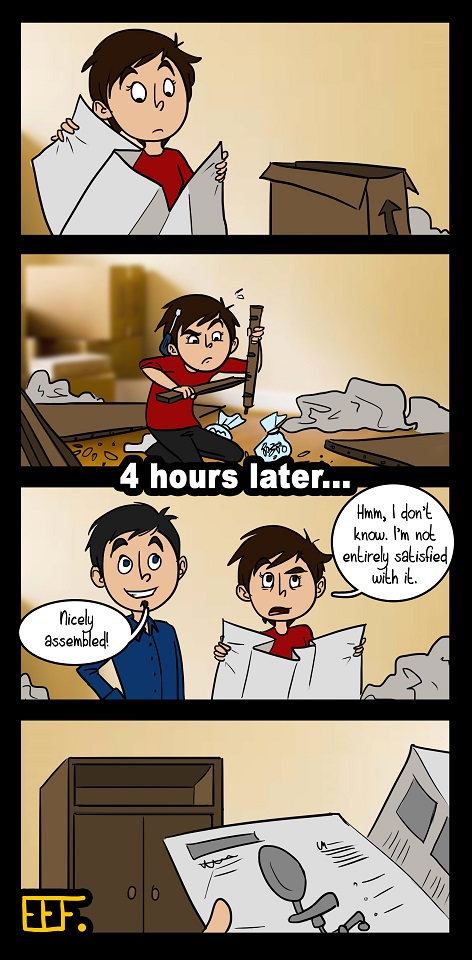
Sometimes you stumble over interesting web comics completely by accident. Like Tuesday Comics, a Dutch slice of life comic by Eef.
An interesting find by Sean Kleefeld: Marvel may have recoloured background characters in their Masterworks series to make their early comics slightly more diverse:
On the one hand, I can appreciate that they were trying to be more inclusive in 1987 when the Masterworks book first came out. As minimal an effort as this was. But what that also does is change the historical record so that it misrepresents where Marvel was at socially in 1962. It makes the company look more progressive than it was. The truth is, as of FF #8, Marvel was not thinking about equal rights or showing people that didn’t look like anyone in their offices.
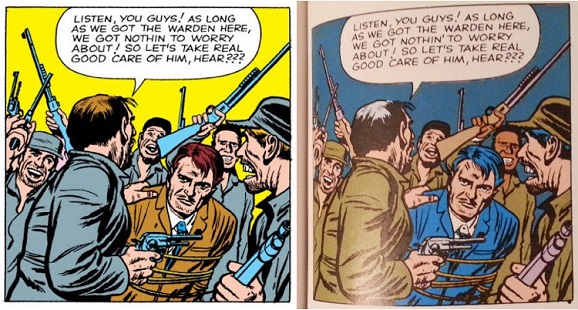
However, I’m somewhat skeptical about it that Marvel really was thinking about diversity in 1987, not a period in which it had many titles starring women or characters of colour. Nor can I see the point in just recolouring some random background characters. To me, it looks more as if that character was always supposed to be black, but miscoloured in the original printing. The story was recoloured for the Masterworks edition by Glynis Oliver. Has anybody talked to her to see what she remembers about why this character was recoloured?
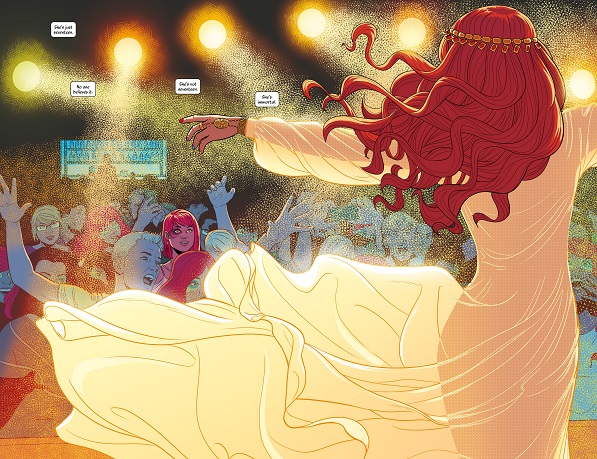
The Wicked + The Divine: The Faust Act is the most nineties comic I’ve read in a long time. Even Kieron Gillen and Jamie McKelvie’s previous project, the britpop inspired Phonogram, wasn’t as nineties as this. Largely because while that revolved around nineties music, this revolves around nineties comics. Not that this is some tedious remake or pastiche, but you can’t help but recognise the influence of a certain kind of nineties comic in this.
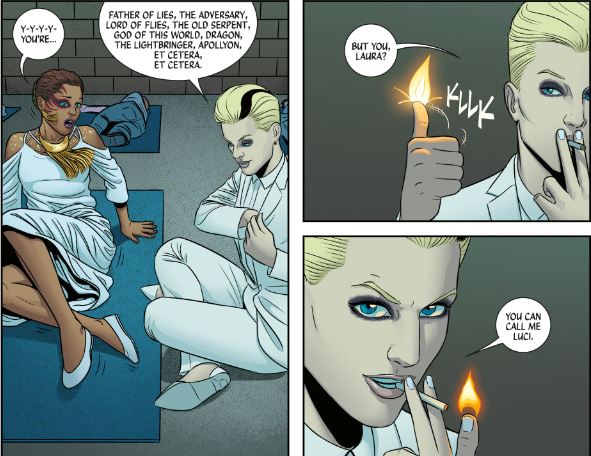
Luci being the most obvious example. Dresses all in white, smokes all the time, makes sarky remarks, has remarkable powers but prefers to work through intimidation? Gee, who does that remind me of?

The attitude, the colouring, the deliberate flattened artwork; it’s all there from Phonogram. Both Phonogram and The Wicked + The Divine are at heart about an essential adolescent posturing, it just works better when you’re talking about supposed reincarnations of gods returning to Earth in teenage bodies to become superstars rather than indie pop devotees. This is everything Youngblood pretended it wanted to be back in 1991, or Morrison’s recent The Multiversity- The Just with its third & fourth generation heroes as reality tv stars attempted.
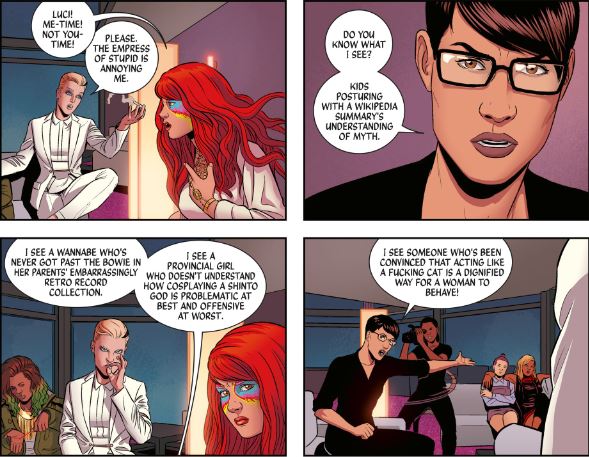
The plot is driven by a murder mystery, but this is largely an excuse to provide a bit of a tour through the world of the gods, as undertaken by the fan and the critic. The critic being the woman in black above, Cassandra; and isn’t that a blatant allusion. To say she isn’t quite what she seems at first would be wrong, but her role is put in a new light by new information about her provided near the end of the book, which made me reread to see if I could’ve picked up on it before. It might even explain her motivations, her hostility against the idea of these teenagers being gods, though that may also be because she seems slightly older than both the gods and the fan/protagonist.
She also wears the same glasses as David Kohl.